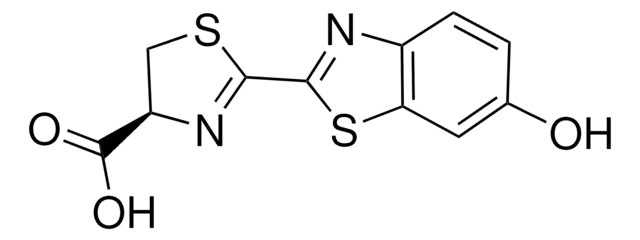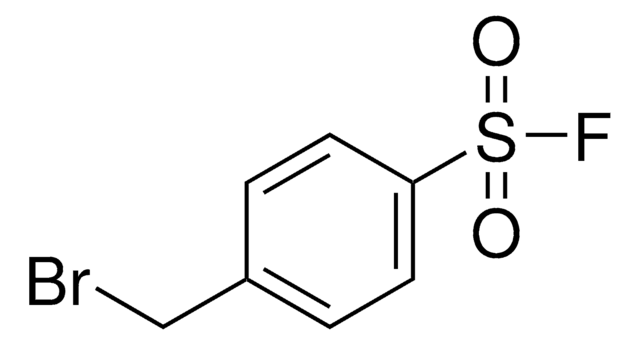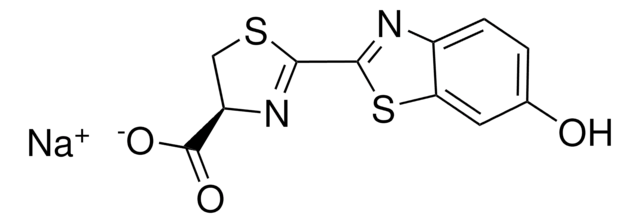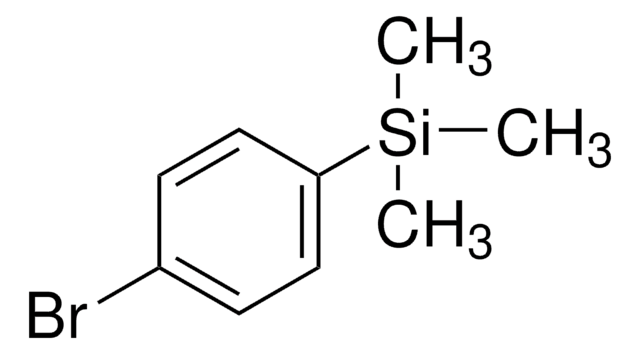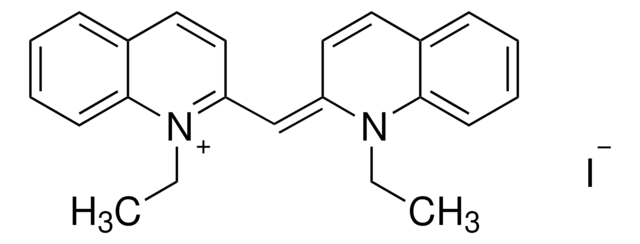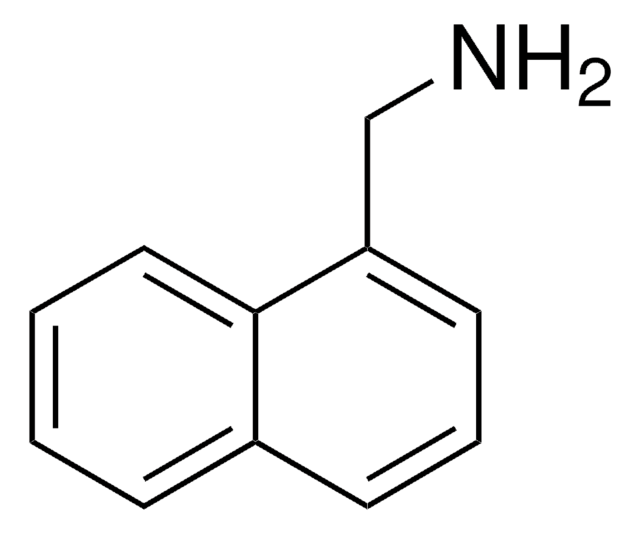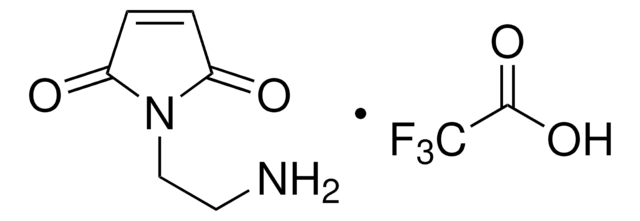902268
seMpai
Synonym(s):
DP3-Na, TokeOni analogue, water-soluble NIR emission luciferin analogue, 2-[(1E,3E)-6-[3-(dimethylamino)pyridine]-1,3-butadien-1-yl]-4,5-dihydro-(4S)-4-thiazolecarboxylic acid sodium salt
About This Item
Recommended Products
description
Purity: mixture of D (80% min.) and L (20% max.) forms
form
powder
color
black to yellow-brown
storage temp.
−20°C
Related Categories
General description
Luciferin is a generic term for the light-emitting compound found in organisms that generate bioluminescence.
Application
- Bioimaging
- In vivo imaging
Storage Class Code
11 - Combustible Solids
WGK
WGK 3
Flash Point(F)
Not applicable
Flash Point(C)
Not applicable
Choose from one of the most recent versions:
Certificates of Analysis (COA)
Don't see the Right Version?
If you require a particular version, you can look up a specific certificate by the Lot or Batch number.
Already Own This Product?
Find documentation for the products that you have recently purchased in the Document Library.
Articles
Overall results suggest that seMpai is a suitable substrate of near-infrared BLI for many biological experiments. Its high solubility in neutral buffer conditions further extends the bioluminescent application of TokeOni derivatives.
Synthesis and Applications of Graphene Nanoribbons Synthesized
Related Content
Organic electronics utilizes organic conductors and semiconductors for applications in organic photovoltaics, organic light-emitting diodes, and organic field-effect transistors.
Organic electronics utilizes organic conductors and semiconductors for applications in organic photovoltaics, organic light-emitting diodes, and organic field-effect transistors.
Organic electronics utilizes organic conductors and semiconductors for applications in organic photovoltaics, organic light-emitting diodes, and organic field-effect transistors.
Organic electronics utilizes organic conductors and semiconductors for applications in organic photovoltaics, organic light-emitting diodes, and organic field-effect transistors.
Our team of scientists has experience in all areas of research including Life Science, Material Science, Chemical Synthesis, Chromatography, Analytical and many others.
Contact Technical Service
